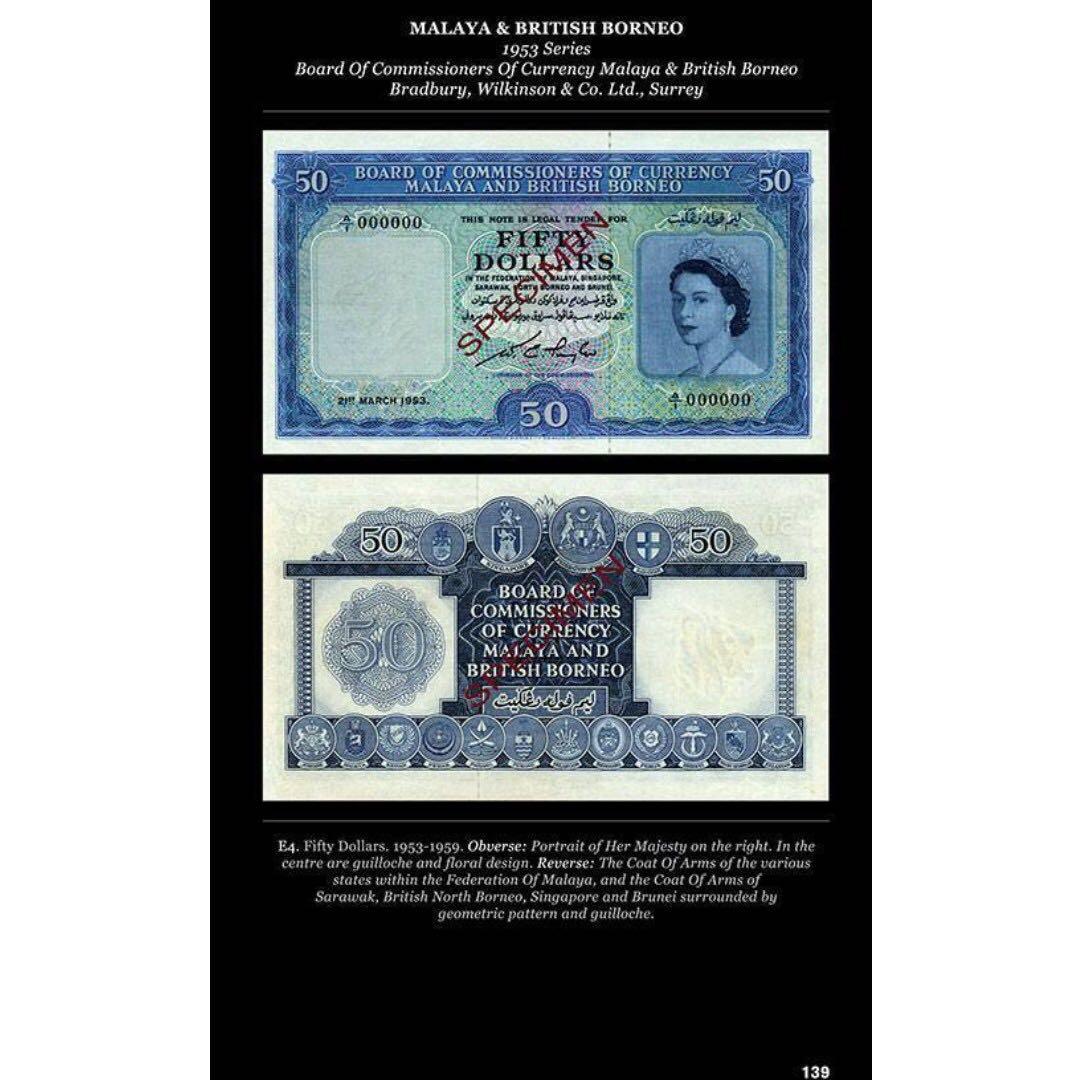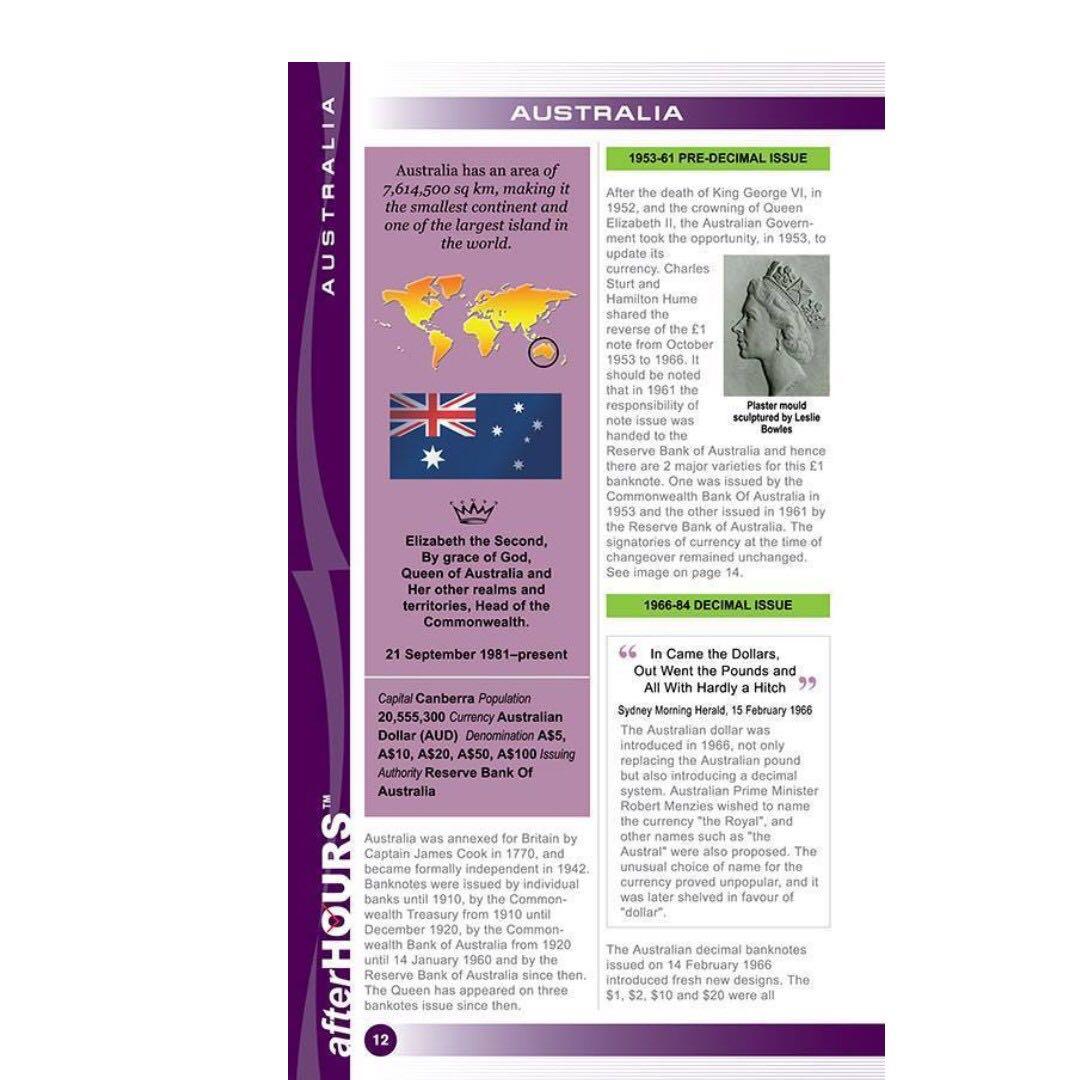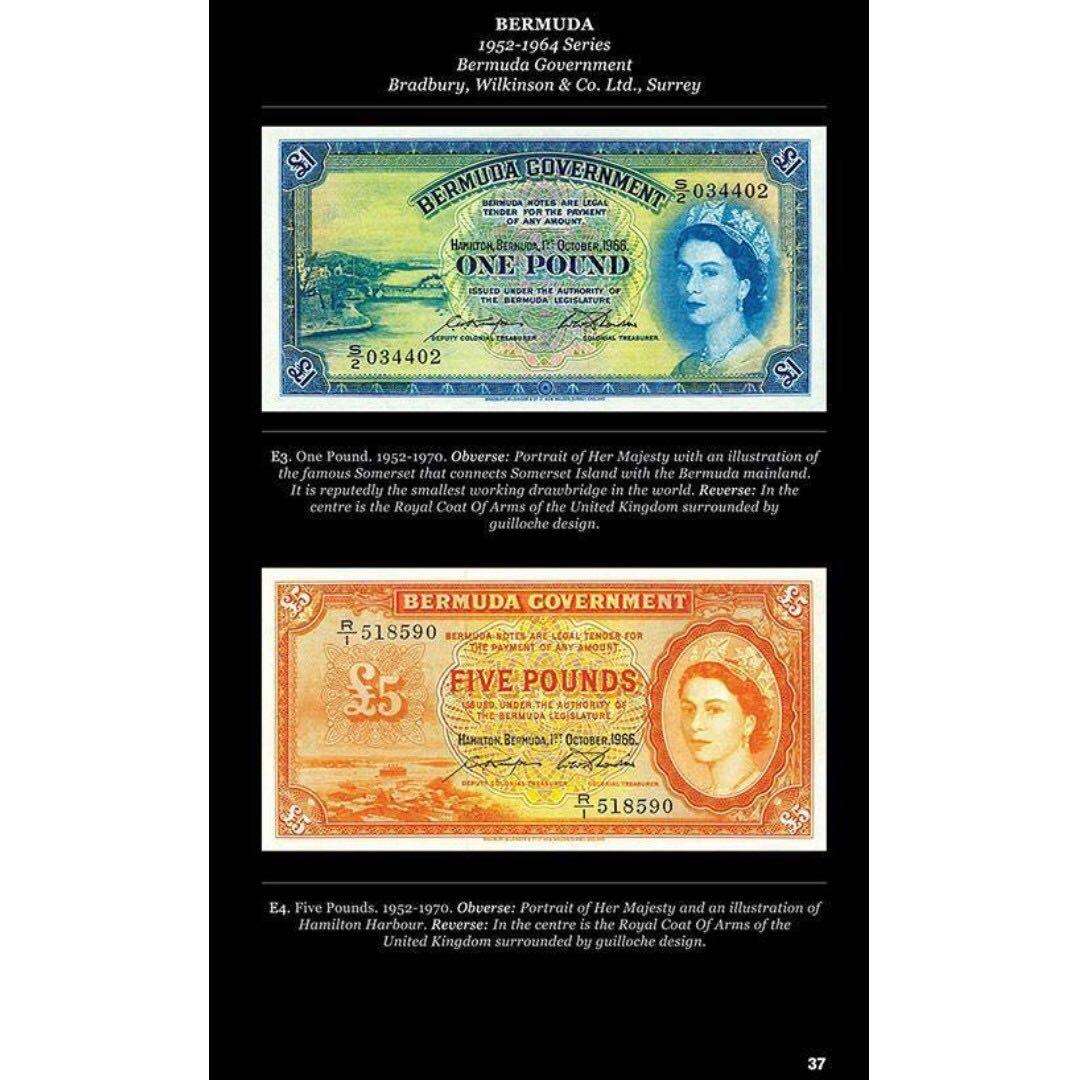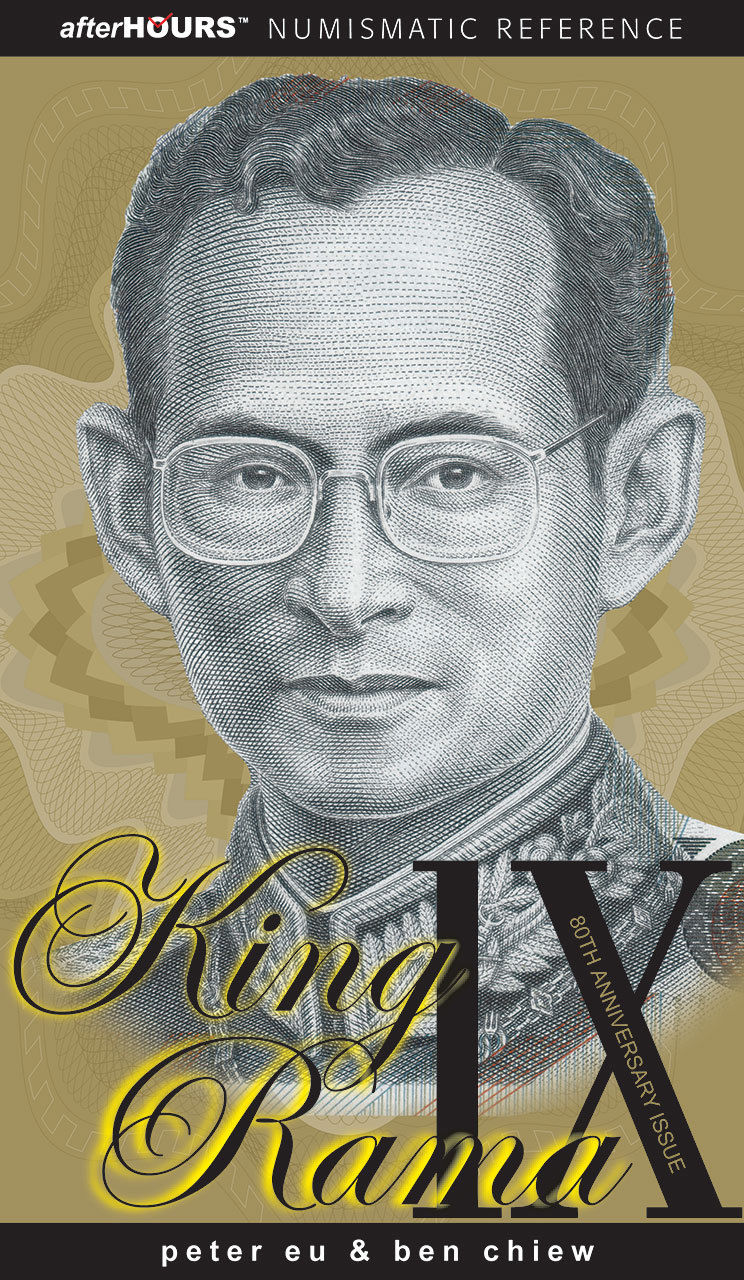Queen Elizabeth II World Banknotes Catalog / Reference
- In stock
SkrinNiaga
Queen Elizabeth II will officially become the longest-serving British monarch Wednesday after serving 63 years, beating a record set by her own great-great-grandmother, Queen Victoria.The 89-year-old Queen Elizabeth has seen an enormous amount of change during her reign. Unlike most people, however, her own evolution has been documented in an unusual way: On banknote portraits. Since first appearing as a young royal on Canadian notes as a child to modern-day portrayals, the queen has appeared on currency all around the world.Her Majesty's portrait has been featured on the banknotes of 29 countries, the world's most featured portrait on banknotes since 1935 when she was only 9 years old. Over 500 full-colour high resolution banknote images, bring these beautiful pieces of currency, many now rarities, to life. 230 pages. Published in 2006 and the only banknotes reference / catalog in the world.
Elizabeth II (Elizabeth Alexandra Mary; born 21 April 1926)[a] is Queen of the United Kingdom and the other Commonwealth realms. Elizabeth was born in London as the first child of the Duke and Duchess of York, later King George VI and Queen Elizabeth, and she was educated privately at home. Her father acceded to the throne on the abdication of his brother King Edward VIII in 1936, from which time she was the heir presumptive. She began to undertake public duties during the Second World War, serving in the Auxiliary Territorial Service. In 1947, she married Philip, Duke of Edinburgh, a former prince of Greece and Denmark, with whom she has four children: Charles, Prince of Wales; Anne, Princess Royal; Andrew, Duke of York; and Edward, Earl of Wessex. When her father died in February 1952, she became Head of the Commonwealth and queen regnant of seven independent Commonwealth countries: the United Kingdom, Canada, Australia, New Zealand, South Africa, Pakistan, and Ceylon. She has reigned through major constitutional changes, such as devolution in the United Kingdom, Canadian patriation, and the decolonisation of Africa. Between 1956 and 1992, the number of her realms varied as territories gained independence and realms, including South Africa, Pakistan, and Ceylon (renamed Sri Lanka), became republics. Her many historic visits and meetings include a state visit to the Republic of Ireland and visits to or from five popes. Significant events have included her coronation in 1953 and the celebrations of her Silver, Golden, and Diamond Jubilees in 1977, 2002, and 2012 respectively. In 2017, she became the first British monarch to reach a Sapphire Jubilee. She is the longest-lived and longest-reigning British monarch as well as the world's longest-reigning queen regnant and female head of state, the oldest and longest-reigning current monarch and the longest-serving current head of state.
The portrait of Queen Elizabeth II has appeared on banknotes in every continent except Antarctica. The first country to feature the queen on bills was Canada, which issued a banknote in 1935 featuring her as an 8-year-old. Canada went on to issue another banknote in 1951 showing the to-be queen at 25. After ascending to the throne in 1952, her face popped up on banknotes all over the world. The 1950s and 1960s saw the greatest number of countries circulating banknotes featuring the queen. Britain issued its first banknote featuring the queen in 1960, long after many other countries. That British note also marked the first time that a monarch had been used on a Bank of England one pound note. As countries gained independence, they often removed her from their currency. Jamaica, for example, put Marcus Garvey on its currency in 1966, and Bermuda redesigned its banknotes to feature local animals. However, in at least 20 countries, the queen remains a beloved figure. Canada, the first country to feature the queen, features her in its latest banknote. Australia and New Zealand, both countries whose flags still incorporate the Union Jack, also feature her on currency. These Caribbean states include six countries and two British overseas territories: Antigua and Barbuda, Dominica, Grenada, Saint Kitts and Nevis, Saint Lucia, Saint Vincent and the Grenadines, Anguilla and Montserrat. Barbados, British Virgin Islands, Trinidad and Tobago, and Guyana have adopted East Caribbean dollars at some point but withdrew, therefore, they are listed separately. Rhodesia, Rhodesia & Nyasaland and Southern Rhodesia were located in Southwestern Africa. Southern Rhodesia is now Zimbabwe, and Rhodesia and Nyasaland became the independent states of Zambia and Malawi in 1963.
Up until 1973, Belize was under the name British Honduras. However, both British Honduras and Belize have currency featuring the queen; therefore, they are listed together. Queen Elizabeth, Elizabeth 2, Elizabeth II, Queen Elizabeth II, Queen Banknotes, Commonwealth Banknotes, Australia, Bahamas, Belize, Bermuda British Caribbean Territories, British Honduras, Canada, Cayman Islands, Ceylon, Sri Lanka, Cyprus, East African Currency Board, East Caribbean States, Falkland Islands, Fiji, Gibraltar, Great Britain (Bank of England), Guernsey, Hong Kong, Isle of Man, Jamaica, Jersey, Malaysia, Malaya and North Borneo, Malta, Mauritius, New Zealand, Rhodesia and Nyasaland, Rhodesia, Saint Helena, Scotland (Royal Bank of Scotland), Seychelles, Solomon Islands, Southern Rhodesia, Trinidad and Tobago, Zambia (essay only)










